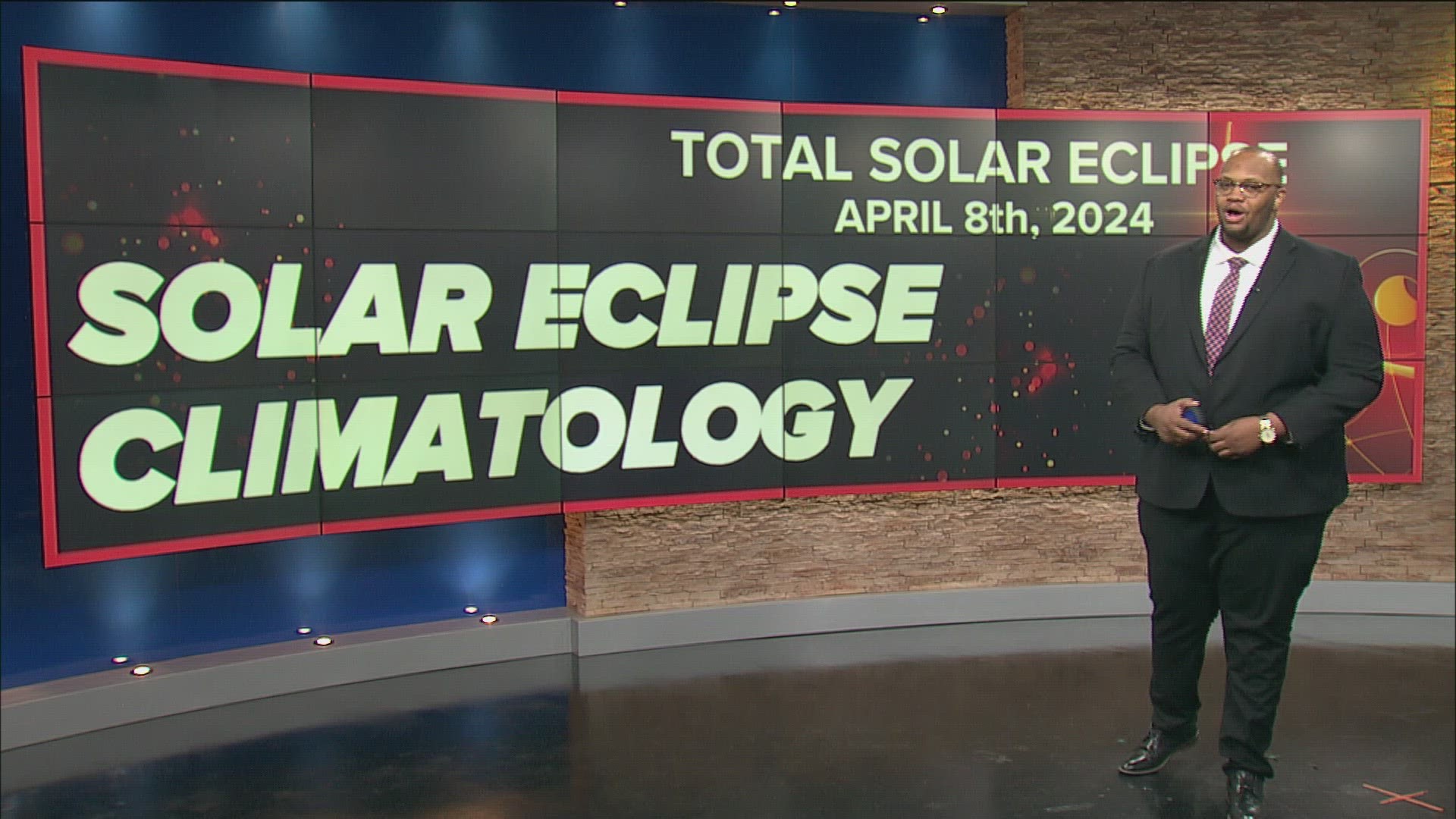TOLEDO, Ohio — The climatology of early April could play one of the most significant roles in forecasting the conditions for the April 8 total solar eclipse, a once-in-a-lifetime event for which we will no doubt want perfect weather.
Weather data from past years may give some insight into what we can expect come April. WTOL 11 Meteorologist Matt Willoughby breaks down the weather patterns, extremes and records for what could be the biggest astronomical event of the decade.
Clouds and rain
The first obstacle to viewing a total solar eclipse is cloud cover and rainfall. During the last three years, Toledo has seen measurable rainfall on April 8. Here are the rainfall totals measured in the Toledo area on each April 8 since 2020:
- April 8, 2020 -- 0.02 inches
- April 8, 2021 -- 0.24 inches
- April 8, 2022 -- 0.02 inches

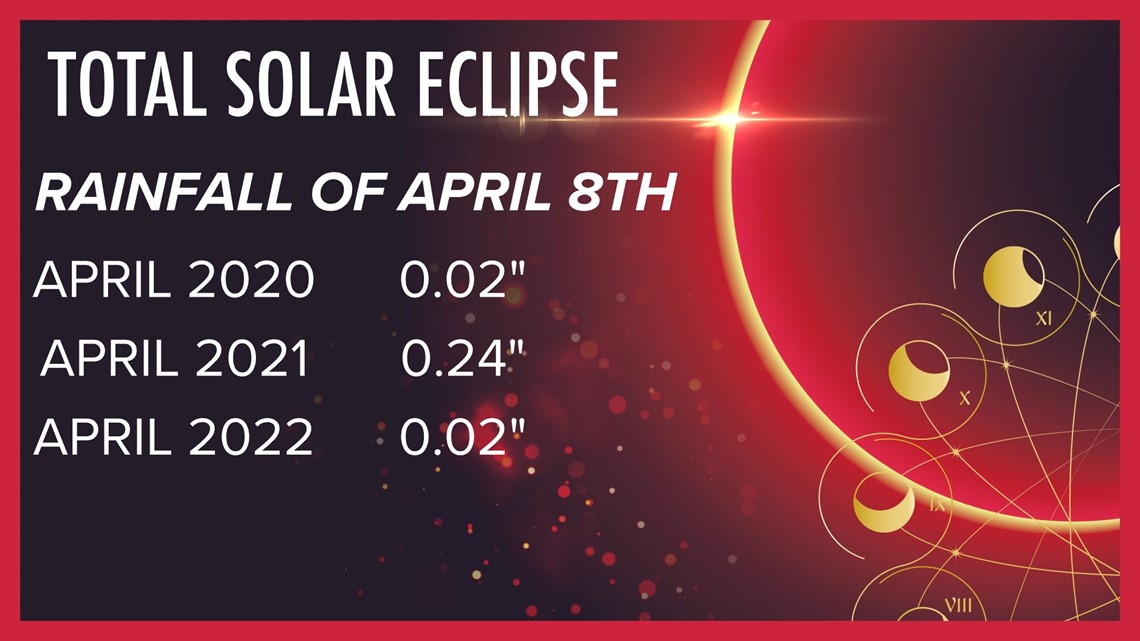
With past years providing ample rainfall, the question remains whether April 8 will also be rainy.
While it's far too early to know the actual forecast for the date of the total solar eclipse, the climatology of early April in northwest Ohio can give us some indications of what we can expect.

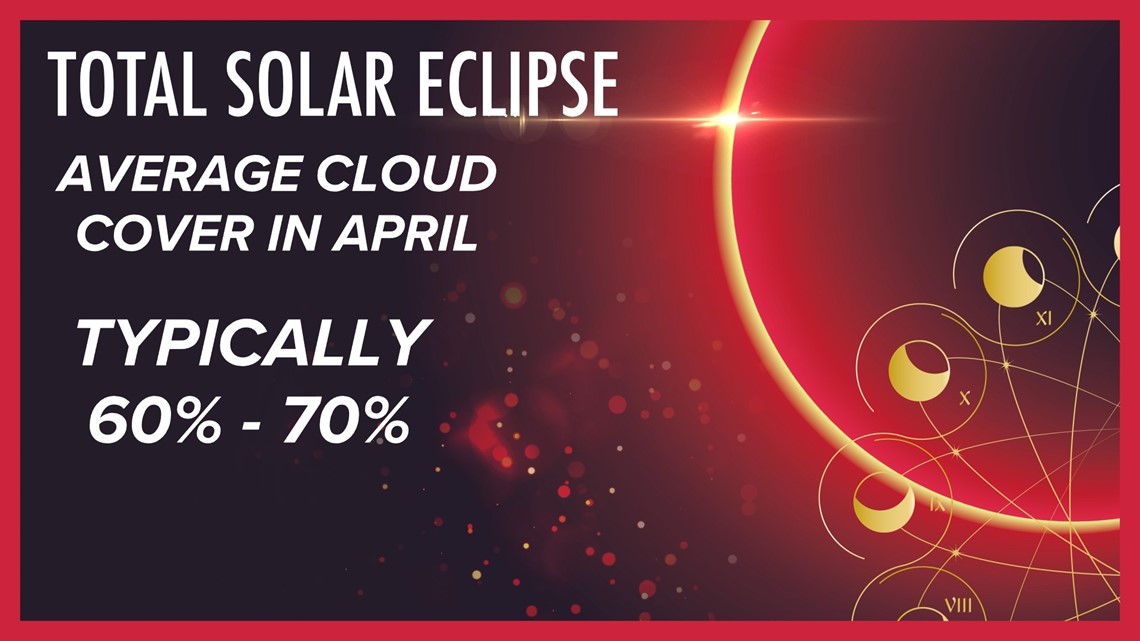

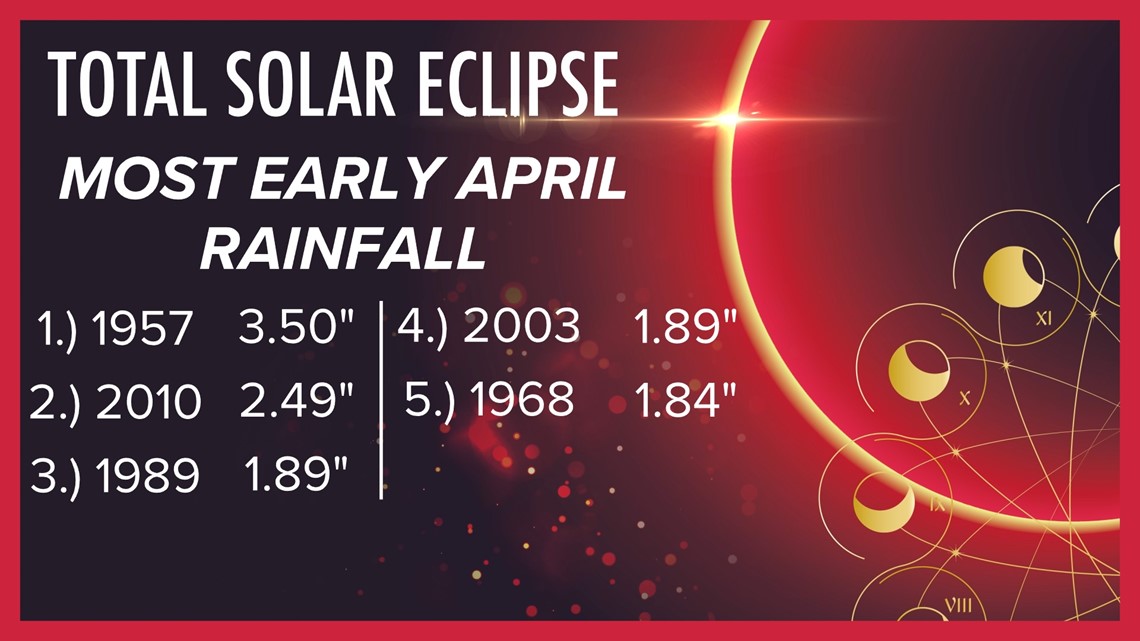
In the last 10 years, northwest Ohio has seen measurable rainfall in the first week of April, with the most rain in a seven-day period clocking in 3.5 inches of rain in 1957. In northwest Ohio, on average the cloudiest months are January and February, but the month of April still averages 60-70% cloud cover.
What about snow?
Rain is not the only thing that eclipse viewers will be up against. While not as likely as in the colder months, snowfall is still possible in April.
Toledo averages 1.3 inches of snowfall in the month of April. Back in April 2016, that average was blown out of the water. On April 8, 2016, the Toledo metro received 3.8 inches of snowfall; just a day later, an additional 4 inches of snow fell. In the last four out of seven years, northwest Ohio has seen measurable snowfall in the first week of April.

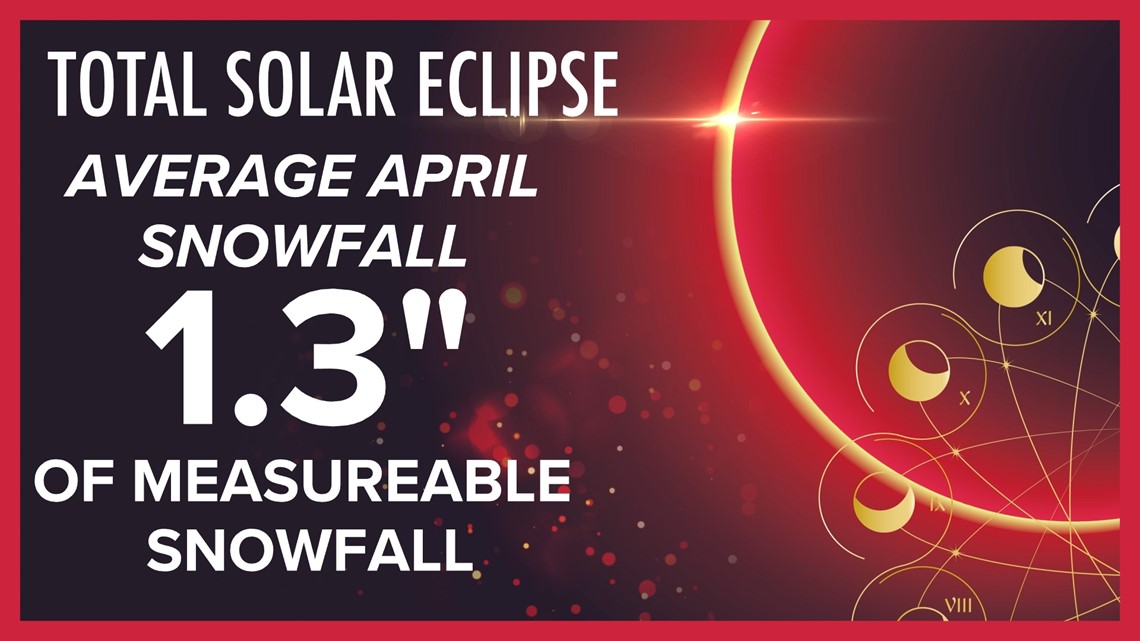
Expected temperatures
Finally, temperatures will be the least of our concerns because no matter how cold or hot, the temperature will not stop people from coming out and seeing the total solar eclipse.
The warmest April 8 high was set back in 2021, with the record of 79 degrees. The coldest April 8 high temperature on record was 33 degrees in 1982.

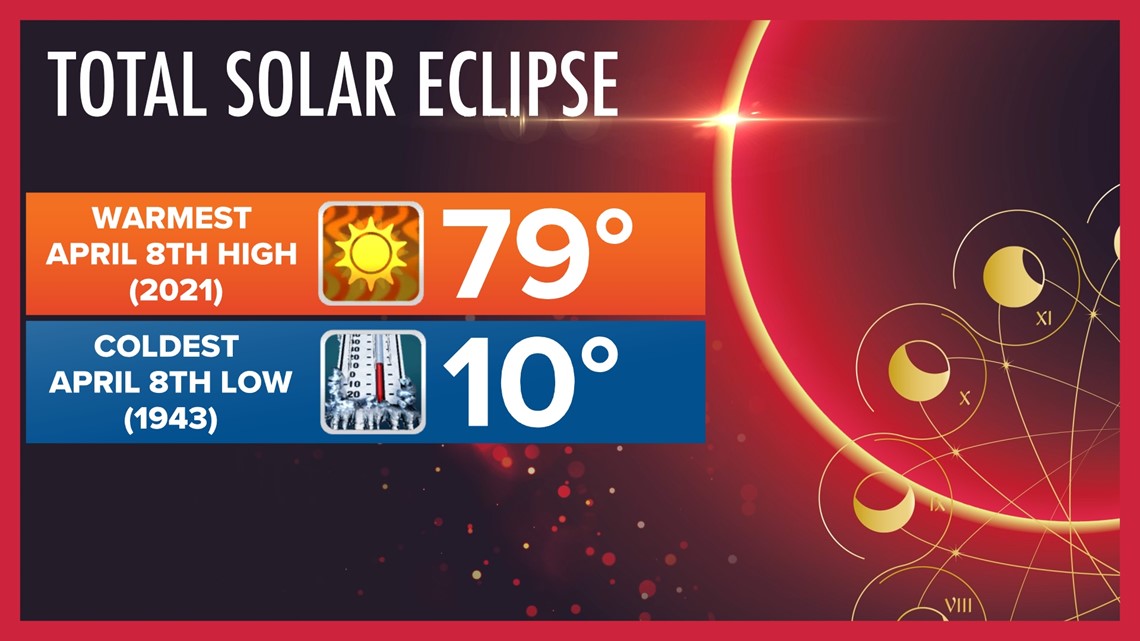
Overall, there are a lot of factors that can play into the conditions we will experience on April 8.
The WTOL 11 Weather Team will keep you updated as the total solar eclipse approaches.
MORE TOTAL SOLAR ECLIPSE 2024 COVERAGE FROM WTOL 11

